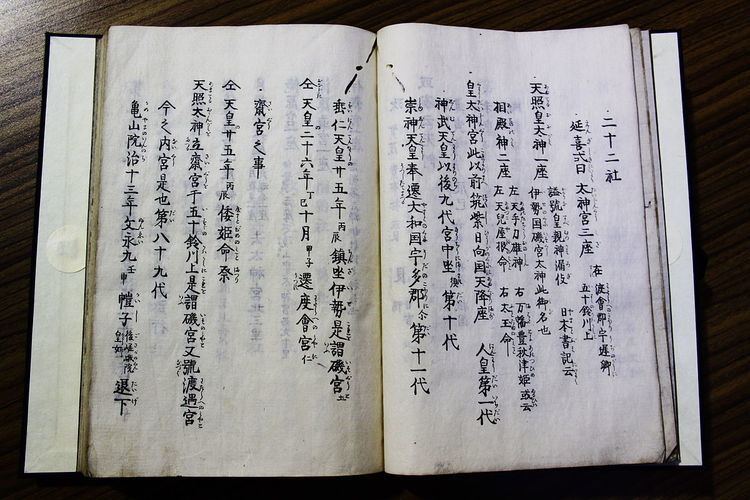 | ||
The Twenty-Two Shrines (二十二社, Nijūni-sha) of Japan is one ranking system for Shinto shrines. The system was established during the Heian period. The shrines listed below receive special offerings from the Imperial Court. Most were selected from shrines that were in the immediate vicinity of Kyoto, the capital of Japan at the time.
Contents
Establishment
Under the Ritsuryō law system, the shrines that the Imperial Court would present offerings to for rites such as the kinensai (祈年祭), a service to pray for a good harvest, were mostly decided by the Engishiki Jinmyōchō (延喜式神名帳, Engishiki Shrine Name Book), but once the Ritsuryō system began to deteriorate, the offerings were only given to a select few shrines.
In 965, Emperor Murakami ordered that Imperial messengers were sent to report important events to the guardian kami of Japan. These heihaku were presented to 16 shrines: 1. Ise; 2. Iwashimizu; 3. Kamo; 4. Matsunoo; 5. Hirano; 6. Inari; 7. Kasuga; 8. Oharano; 9. Miwa; 10: Isonokami; 11. Ōyamato; 12. Hirose; 13. Tatsuta; 14. Sumiyoshi; 15. Nibu and 16. Kibune.
In 991, Emperor Ichijō added three more shrines to Murakami's list—17. Yoshida; 18. Hirota; and 19. Kitano; and two more were added three years later in 994;—20. Umenomiya; and 21. Gion.
In 1039, Emperor Go-Suzaku ordered that one more shrine be added to this list, 22. Hie, and this unique number of Imperial-designated shrines has not been altered since that time.
Near the end of the Heian period, there was a movement to add Itsukushima Shrine to the list, but it did not happen. However, until the end of the Muromachi period, the Imperial Court made offerings to it, and in the Edo period, offerings were again made after disasters occurred.
List of shrines
When the Nijūni-sha are considered as a grouped set, they are conventionally presented in order of rank, not in terms of the chronological sequence in which they were designated. The three rank ranked groupings originally derived from a complex array of Heian geopolitical relationships.
